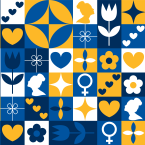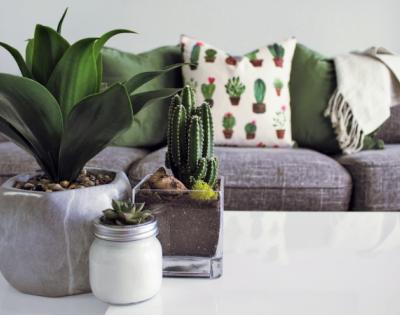
What is plant therapy?
Plant therapy, or horticulture therapy, is the inclusion of plants into counseling sessions to aid in mental and physical healing. Humans have an ancient connection to plants, and many studies have suggested that they have a calming effect on us.
What are the benefits of plant therapy?
There are too many benefits to count when using plants in therapy. Horticulture therapy can improve the functioning of many different kinds of people, including individuals with mental, physical, terminal, and social issues. Some specific benefits of plant therapy may include:
- Stress reduction
- Improving memory
- Strengthening coordination
- Problem solving skills
What types of activities do clients do in plant therapy?
The goals of horticulture therapy are to help people build confidence, increase compassion, and incorporate nature into their life more. This can be done through a variety of activities, such as:
- Watering
- Planting seeds, seedlings, or full-grown plants in garden beds or containers
- Landscaping or gardening activities
- Interacting with plants by touching, pruning, or removing debris
- Repotting plants in new containers
- Walking through a garden area
What types of plants are used in plant therapy?
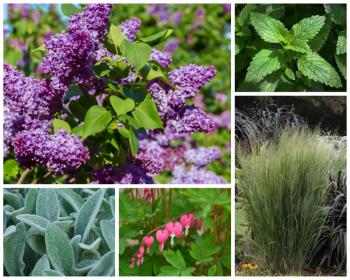
Any plant can be used in plant therapy. Even just pictures of plants have been shown to have similar benefits to real plants. Horticulture Counselor Sheridan Averson likes to use plants she finds on clearance at different places, with her favorites coming from Baker Garden and Gift and Lowe’s in Fargo.
A larger subset of plant therapy focuses on plants that have stronger sensory appeals, like how they smell or feel to the touch. Some plants included in the sensory category are lilacs, mint, lamb’s ear, bleeding heart, and prairie grasses, among many others.
Plant Therapy Resources:
- American Horticultural Therapy Association
- Rutgers School of Environmental and Biological Sciences
- Horticultural Therapy Institute
- SD Sensory Garden Plants
- Unkillable Plants
- Sheridan's Research On Plants and Stress
Meet the Author: Sheridan Averson
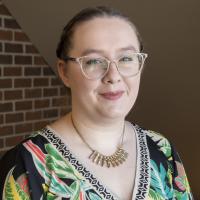
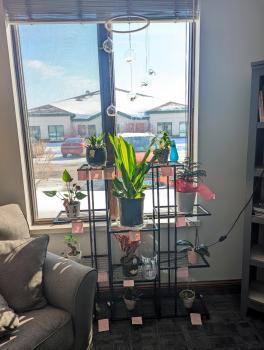
to various plants:
air plants in the hanger;
top left: Hardy Aloe, Campfire
Crassula, and Gollum Jade;
top right: Algerian Ivy;
second row: Anthurium, Corn
Plant, and Norfolk Island Pine;
third row: Curtain Fig Bonsai,
Garden Croton, and a Mini Orchid;
bottom row: Aluminum Plant
and Rex Begonia.
Sheridan Averson, MS, LAPC, is an Employee Assistance Program Counselor at The Village's Fargo location. She received her Bachelor of Science at NDSU in Psychology and her Master of Science in Clinical Counseling through the University of Jamestown. Sheridan has an affinity for mixing and matching research-based therapy techniques as a way to tailor services to each client. She has a special interest in Horticulture Therapy, where plants and plant-based activities are utilized during sessions to provide a calming focus and environment to clients. This is partially due to her inherent love for plants and gardening, and she boasts a collection of over 50 plants in her home.

